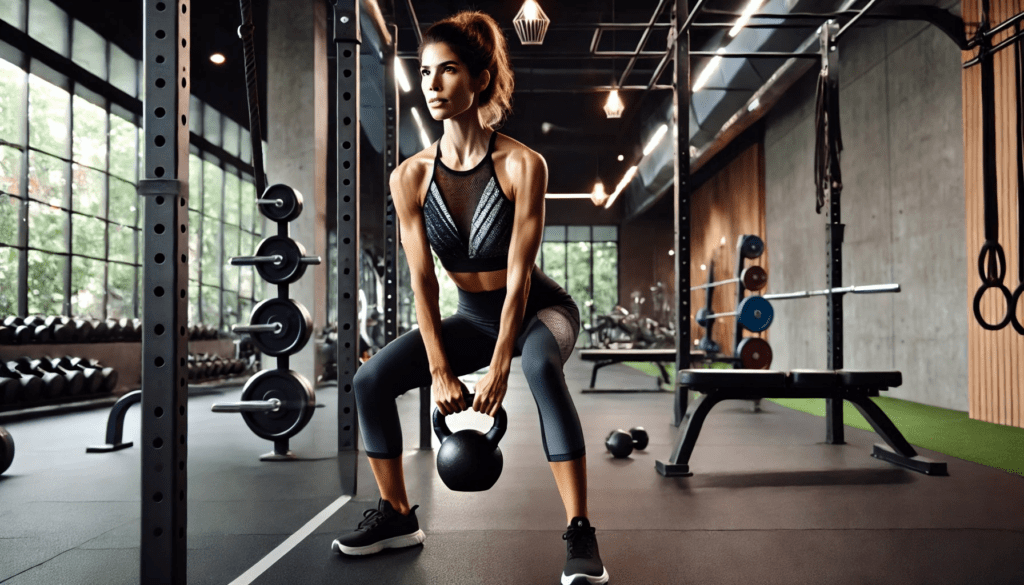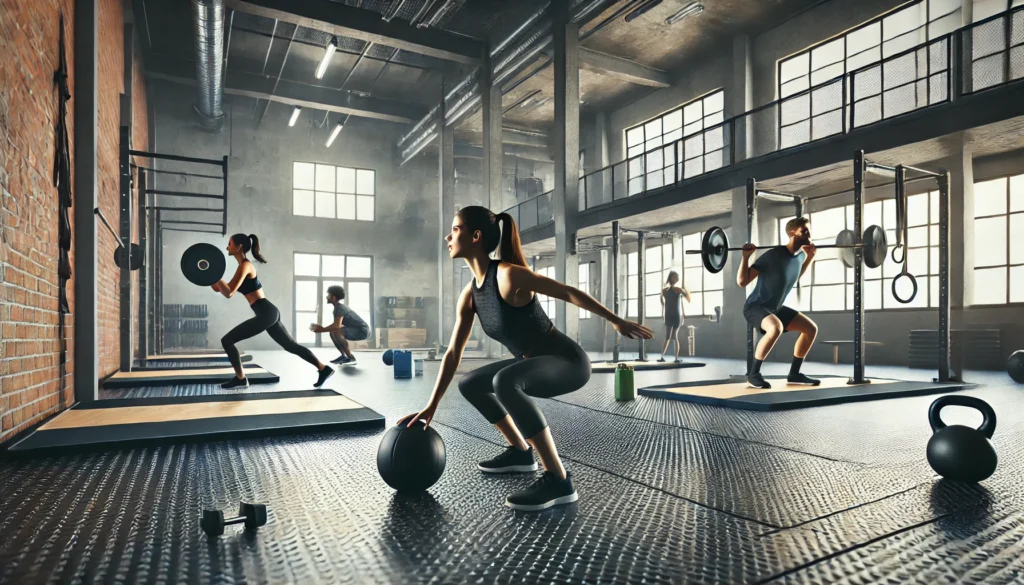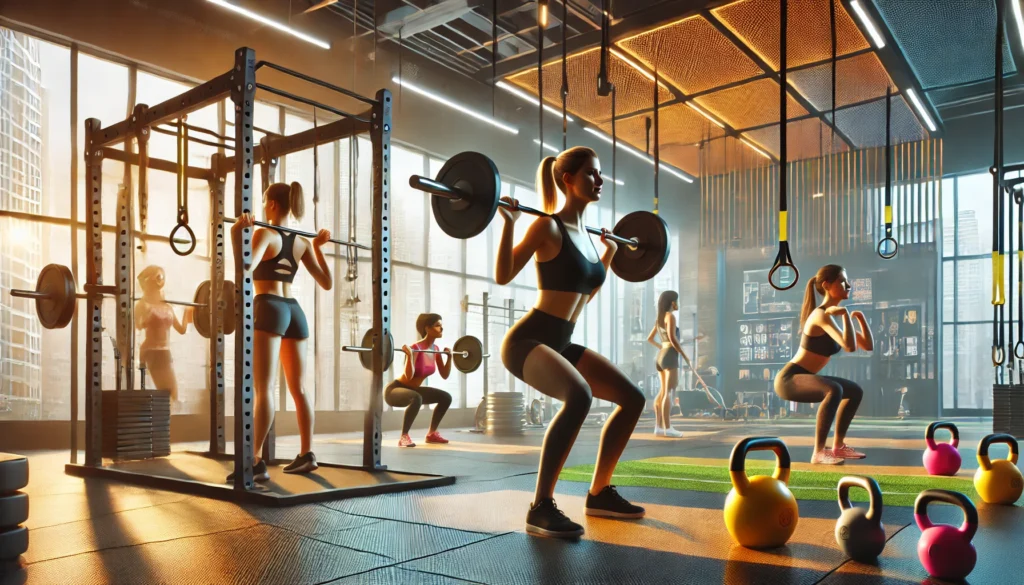Understanding the Importance of Core Workouts for Women
Core strength is often associated with aesthetic appeal, but its significance extends far beyond achieving a toned midsection. For women, developing core strength is essential not only for enhancing physical appearance but also for improving overall functional fitness. A strong core supports posture, stabilizes the spine, and facilitates efficient movement in daily activities. Whether lifting groceries, bending down to pick up a child, or engaging in athletic performance, core stability plays a fundamental role in movement mechanics.
Many women prioritize cardiovascular workouts and lower-body training but may overlook the importance of structured core workouts at the gym. Strengthening the abdominal muscles, obliques, and lower back contributes to greater endurance, reduced injury risk, and enhanced athletic performance. Unlike traditional sit-ups, an effective core workout for women incorporates a variety of functional movements that challenge stability, endurance, and control.
Building a strong core is particularly beneficial for posture and spinal health. Prolonged sitting, poor ergonomic habits, and muscle imbalances can lead to lower back pain and postural misalignment. Engaging in a core workout routine at the gym counteracts these issues by strengthening the muscles that support spinal alignment. Exercises targeting the deep core muscles, including the transverse abdominis and pelvic floor, create a stable foundation that enhances balance and reduces strain on the back.
A well-structured female core workout includes more than just abdominal exercises. The core comprises multiple muscle groups, including the rectus abdominis (front of the abs), obliques (sides of the waist), erector spinae (lower back), and hip stabilizers. Incorporating exercises that engage all these areas ensures balanced strength development. Functional core training integrates rotational, anti-rotational, and dynamic stabilization movements to enhance total-body coordination.
By committing to a comprehensive core workout gym female program, women can experience significant improvements in strength, endurance, and mobility. Whether the goal is to enhance sports performance, prevent injuries, or develop a sculpted waistline, a structured core routine is a vital component of overall fitness. When performed consistently, core exercises not only enhance aesthetics but also contribute to a body that moves efficiently and powerfully in every aspect of life.
You May Also Like: Functional Strength Training: The Key to Mobility, Power, and Everyday Performance

The Science Behind Core Strength and Stability
Core stability is the foundation of functional movement, providing a base for nearly every physical activity. The core functions as the body’s central powerhouse, transferring force between the upper and lower body. Whether running, lifting weights, or simply maintaining an upright posture, core strength is crucial for controlled and efficient movement. Understanding the biomechanics behind core engagement allows women to optimize their workouts and target the right muscle groups effectively.
One of the most essential components of core training is activation of the deep stabilizing muscles. Unlike superficial muscles such as the rectus abdominis, which create the appearance of six-pack abs, deep core muscles like the transverse abdominis and multifidus provide spinal support and pelvic stability. Strengthening these muscles reduces excessive strain on the lower back and improves postural alignment. A well-designed core workout for women focuses on activating these stabilizers through controlled, functional movements rather than relying solely on traditional crunches.
Breathing patterns also play a vital role in core engagement. Proper diaphragmatic breathing enhances intra-abdominal pressure, creating a stable base for movement. Many women unknowingly hold their breath during exercises, limiting core activation. Learning to engage the core through proper exhalation and breath control maximizes muscle recruitment and reduces unnecessary tension. Exercises such as dead bugs, Pallof presses, and plank variations reinforce controlled breathing while challenging core stability.
Another critical aspect of core strength is the integration of dynamic and anti-rotational movements. The core is responsible for generating, absorbing, and resisting force in multiple planes of motion. Functional core workouts at the gym for women should include rotational exercises like Russian twists, anti-rotational drills like cable chops, and isometric holds such as planks to develop comprehensive core stability. Training these movement patterns enhances athletic performance and prepares the body for real-world activities.
Core endurance is just as important as strength. Many women experience core fatigue during prolonged activities such as running or cycling, leading to compromised form and increased injury risk. Incorporating endurance-based core exercises, such as prolonged plank holds and stability ball rollouts, builds muscular stamina, allowing the core to maintain stability under fatigue. A well-balanced core workout routine at the gym includes both strength and endurance components to ensure well-rounded development.

Designing an Effective Core Workout Plan for Women at the Gym
Creating a well-structured core workout gym routine involves selecting exercises that target different aspects of core function. A combination of stability, endurance, and strength-focused movements ensures comprehensive development. Each session should incorporate dynamic warm-ups, strength-building exercises, and mobility-focused cooldowns to optimize results and prevent injuries.
A proper female core workout begins with activation drills to prepare the core for more intense movement. Exercises such as pelvic tilts, diaphragmatic breathing, and banded glute bridges activate the deep core muscles, improving neuromuscular coordination. Warm-up sequences also increase blood flow and enhance mobility, reducing the risk of muscle tightness or strain.
Strength-building exercises form the foundation of a core workout routine at the gym. Movements such as weighted cable crunches, hanging leg raises, and decline sit-ups add resistance to core training, promoting muscle growth and definition. Incorporating free weights and resistance bands challenges core stability while enhancing muscle activation. Progressive overload is key to continual improvement, so gradually increasing resistance ensures long-term strength development.
Functional training plays a significant role in women’s core workouts. Stability ball exercises, suspension trainer movements, and unilateral exercises like single-arm presses engage the core in a functional manner. These exercises mimic real-life movement patterns, improving total-body coordination and balance. Women who engage in sports or physical activities benefit greatly from functional core training, as it enhances agility and movement efficiency.
To maximize fat loss and sculpt the midsection, incorporating metabolic conditioning into a core workout routine at the gym is highly effective. High-intensity core circuits that include exercises such as medicine ball slams, plank jacks, and battle ropes elevate heart rate while targeting the core. This type of metabolic training enhances calorie burn and promotes fat loss while building endurance.
A comprehensive core workout gym female program also includes mobility and flexibility work. Dynamic stretching, foam rolling, and yoga-inspired movements such as spinal twists and hip openers enhance core mobility, reducing stiffness and improving overall movement quality. Recovery-focused practices support long-term consistency by preventing overuse injuries and maintaining joint health.

Frequently Asked Questions (FAQ) on Core Workouts for Women
1. How does a core workout gym female plan contribute to mental well-being?
A core workout gym female routine does more than just strengthen muscles—it also has significant mental health benefits. Engaging in a structured core workout for women helps improve focus, reduce stress, and enhance overall cognitive function. The deep core muscles are connected to breathing patterns, meaning that core exercises that incorporate diaphragmatic breathing, such as planks or dead bugs, promote relaxation and stress relief. Additionally, regular core workouts at the gym woman improve posture and confidence, which can positively impact self-esteem and mood. A well-balanced core workout routine can serve as an excellent tool for reducing anxiety, improving body awareness, and enhancing overall mental resilience.
2. What financial benefits can women experience from investing in a core workout routine gym?
Investing in a consistent core workout for women can reduce long-term healthcare costs by preventing injuries, reducing lower back pain, and improving mobility. Strengthening the core stabilizes the spine, which can prevent common musculoskeletal issues that often lead to expensive physical therapy or medical treatments. Additionally, women who maintain a strong core experience better athletic performance, reducing the likelihood of costly sports-related injuries. For those working sedentary jobs, a strong core improves posture and reduces the risk of developing chronic pain conditions, minimizing the need for chiropractic care or ergonomic interventions. Over time, incorporating a core workout gym routine into fitness plans can lead to substantial savings in medical expenses and productivity losses.
3. How does a female core workout impact hormonal balance and metabolism?
A well-designed female core workout can positively influence hormonal balance by reducing cortisol levels (the stress hormone) and improving insulin sensitivity. Core-focused strength training increases lean muscle mass, which in turn boosts metabolism and enhances fat-burning efficiency. Engaging in a core workout routine that includes resistance-based exercises, such as weighted cable crunches or stability ball rollouts, improves metabolic flexibility, allowing the body to use energy more efficiently. Additionally, women in various life stages—such as postpartum recovery or menopause—can benefit from core strengthening, as it aids in stabilizing hormonal fluctuations. By incorporating progressive overload into core workouts at the gym, women can optimize their metabolism while supporting overall hormonal health.
4. How does a core workout gym plan improve athletic performance in women’s sports?
A core workout gym female program plays a crucial role in enhancing performance in sports such as running, tennis, and weightlifting. Core stability allows for better energy transfer between the upper and lower body, leading to improved speed, agility, and power. Exercises such as rotational medicine ball throws, Pallof presses, and landmine twists strengthen the obliques, which are essential for quick direction changes in sports like soccer or basketball. A well-structured female core routine also improves endurance, ensuring that athletes maintain proper posture and movement efficiency throughout their competition. By strengthening the deep core muscles, a core workout for women minimizes injury risk while maximizing force generation and movement efficiency in various sports.
5. Can a core workout routine help with postpartum recovery?
Yes, a core workout routine can be highly beneficial for postpartum recovery, as it helps rebuild strength in the deep abdominal muscles and pelvic floor. Pregnancy often leads to weakened core muscles, especially in the transverse abdominis and pelvic stabilizers, which can contribute to lower back pain and postural imbalances. Gentle core exercises such as pelvic tilts, diaphragmatic breathing, and bird-dogs gradually restore core function without excessive strain. As strength improves, a core workout program can include more advanced movements like plank variations and resistance-based core work. Engaging in a structured core workout for women post-pregnancy supports long-term strength, stability, and recovery.
6. What are some industry trends influencing the popularity of core workouts at the gym?
The fitness industry is seeing an increasing demand for core workouts at gym woman programs, driven by a shift toward functional training, online fitness coaching, and group-based core workout classes. Many boutique fitness studios are now offering specialized core training sessions that focus on mobility, strength, and posture correction. Additionally, wearable technology and smart fitness apps allow women to track their core workout routine gym progress, enhancing motivation and accountability. The rise of virtual personal training has also made core workout for women programs more accessible, allowing individuals to follow structured plans from home or at the gym. As more women recognize the importance of core strength beyond aesthetics, the demand for expert-led female core training continues to grow.
7. How can a core workout gym female plan help women who work sedentary jobs?
For women who spend long hours sitting at a desk, a core workout gym female program is essential for counteracting the negative effects of prolonged sitting. Sitting for extended periods can weaken the deep core muscles, leading to poor posture and lower back pain. Incorporating core activation exercises such as seated pelvic tilts, standing oblique crunches, and resistance band rotations throughout the workday can improve core engagement. Additionally, adding strength-based core workout exercises like cable chops, stability ball planks, and glute bridges enhances spinal support and reduces tension in the lower back. By maintaining core strength, women in sedentary professions can improve posture, reduce pain, and increase overall movement efficiency.
8. How does a female core workout benefit long-term mobility and flexibility?
A structured female core workout improves not only strength but also flexibility and mobility by enhancing control over movement patterns. Core exercises that incorporate dynamic stretching, such as hanging knee raises or yoga-based movements like boat pose, improve the range of motion in the hips and lower back. Many core workouts at gym woman programs now integrate Pilates-inspired movements, which lengthen the muscles while strengthening them, improving flexibility without sacrificing stability. Training the core to function effectively in multiple planes of motion reduces stiffness and enhances movement efficiency in daily life. As a result, a well-rounded core workout routine helps women maintain mobility and prevent injuries as they age.
9. How do breathing techniques enhance the effectiveness of a core workout for women?
Proper breathing techniques are essential for maximizing core engagement during a core workout routine. Many women unknowingly hold their breath during exercises, reducing intra-abdominal pressure and limiting core activation. Learning to exhale forcefully during exertion, such as when lifting a weight or holding a plank, activates the deep core muscles more effectively. Diaphragmatic breathing, where the breath expands through the lower abdomen rather than the chest, improves oxygen intake and stabilizes the spine. By incorporating conscious breathing into core workouts at the gym, women can enhance muscle activation, improve endurance, and reduce the risk of unnecessary strain.
10. How can a core workout routine gym be adapted for different fitness levels?
A core workout routine gym can be easily modified to accommodate beginners, intermediate, and advanced fitness levels. For beginners, focusing on foundational movements like bird-dogs, dead bugs, and knee-supported planks helps build core stability. As strength improves, more challenging core workout gym female exercises, such as hanging leg raises and weighted Russian twists, can be introduced. Intermediate and advanced individuals can benefit from resistance-based female core workouts, incorporating kettlebell swings, ab rollouts, and plyometric core movements. Additionally, a progressive core workout plan should include increasing resistance, reps, or time under tension to continuously challenge core strength. By scaling difficulty, women can ensure continuous improvement while preventing plateaus.
Conclusion: Elevating Core Strength and Stability for a Stronger, Sculpted Midsection
Developing core strength is essential for women seeking improved performance, aesthetics, and overall well-being. A well-structured core workout for women goes beyond superficial abdominal exercises, incorporating stability training, functional movement, and endurance-based exercises. Strengthening the deep core muscles enhances posture, reduces injury risk, and improves total-body coordination.
A thoughtful core workout routine at the gym prioritizes progressive overload, functional movements, and endurance-based exercises to build a resilient midsection. Whether the goal is to enhance athletic performance, support daily activities, or achieve a sculpted appearance, core training plays a vital role in overall fitness. Incorporating a variety of exercises that challenge the core in different planes of motion ensures balanced development and long-term strength gains.
Consistency and proper technique are key to success in any female core workout program. Understanding the mechanics of core engagement, breathing patterns, and movement efficiency enhances the effectiveness of each exercise. A well-rounded training approach that includes mobility work, metabolic conditioning, and strength-based movements maximizes results while promoting long-term core health.
By committing to a structured core workout gym female plan, women can experience enhanced core strength, better posture, and greater movement efficiency. Whether training for sports, rehabilitation, or personal fitness goals, core workouts provide the foundation for a strong, stable, and powerful body. Investing in core development not only enhances physical aesthetics but also contributes to a lifetime of improved performance, injury prevention, and overall well-being.
women’s core exercises, sculpted midsection, core strength training, functional core workout, abdominal training, gym workouts for women, advanced core routine, female fitness program, core endurance, mobility for core strength, strength training for women, best core exercises, total-body stability, functional training for women, core strength development, gym-based ab workouts
Further Reading:
Core Muscle Activity during Physical Fitness Exercises: A Systematic Review
20-Minute Core Workout Routine For Functional Strength
Core training and performance: a systematic review with meta-analysis

